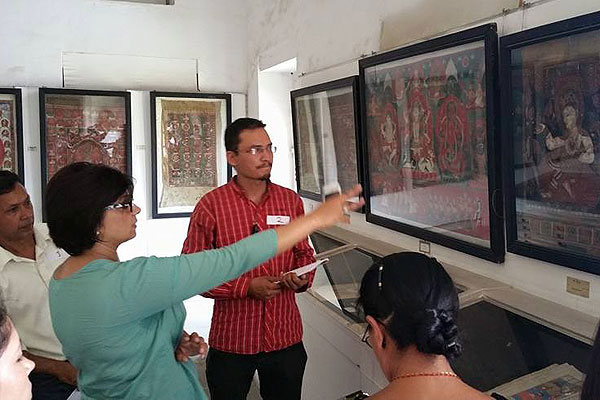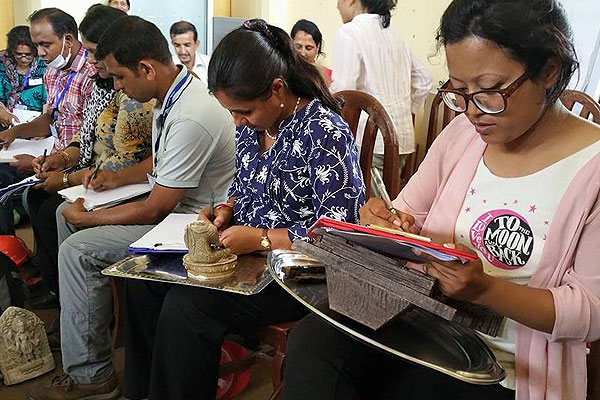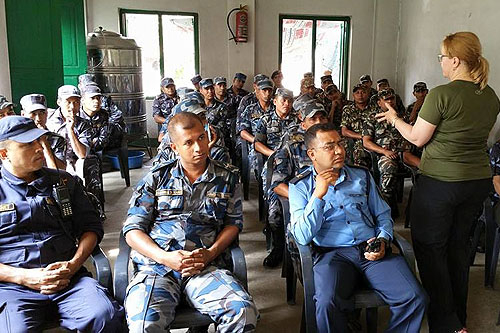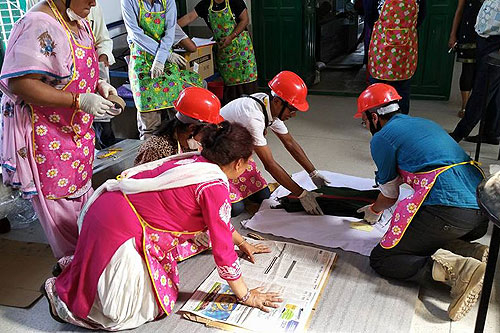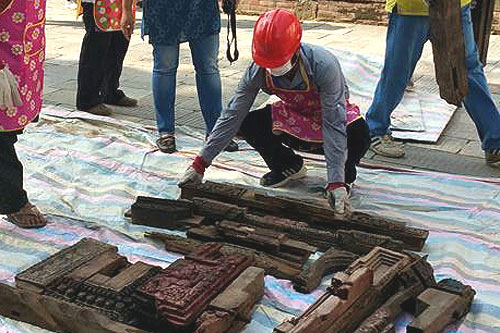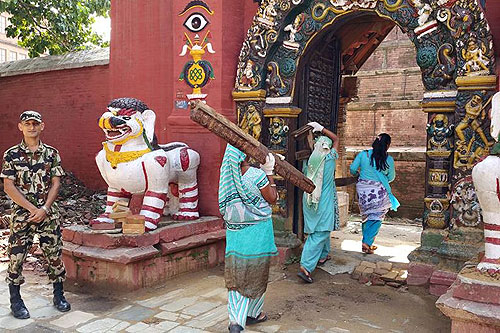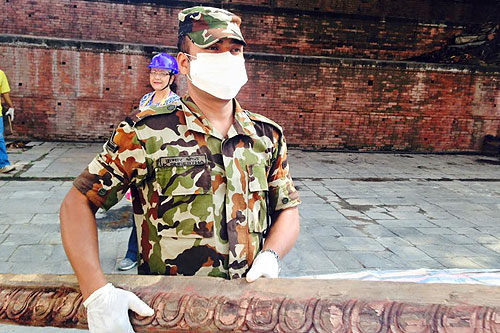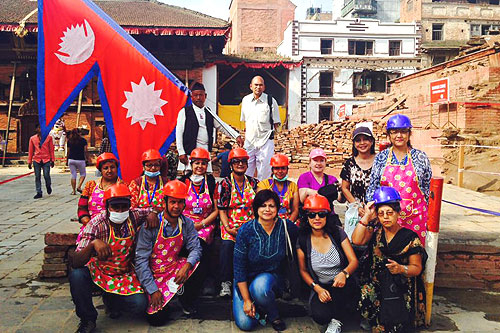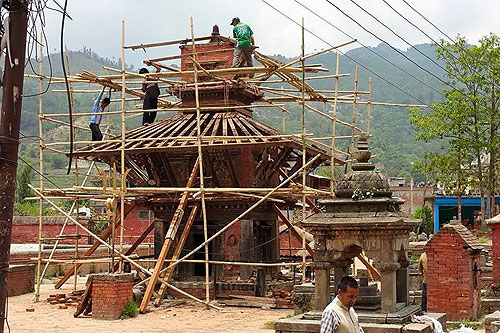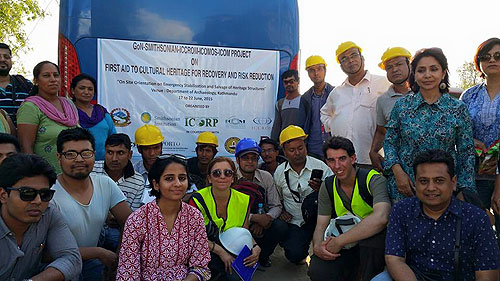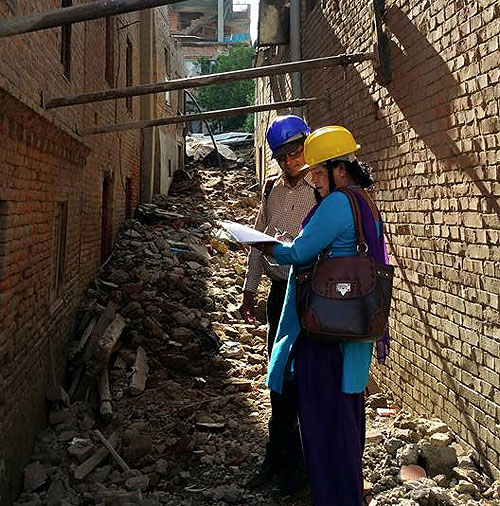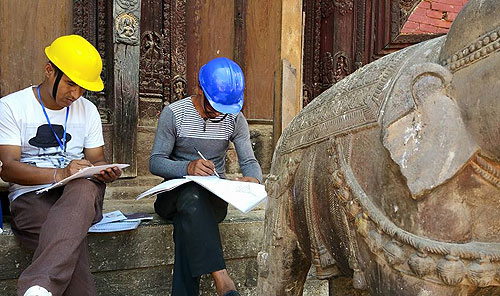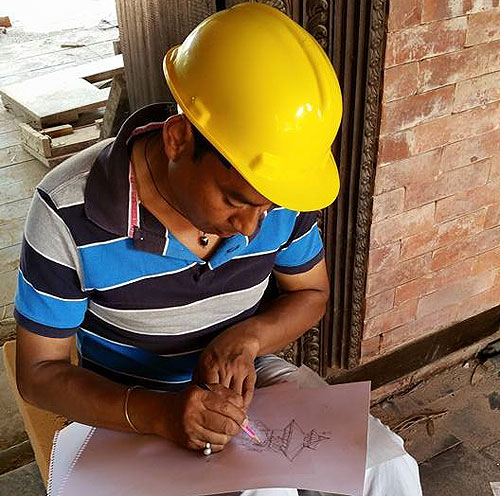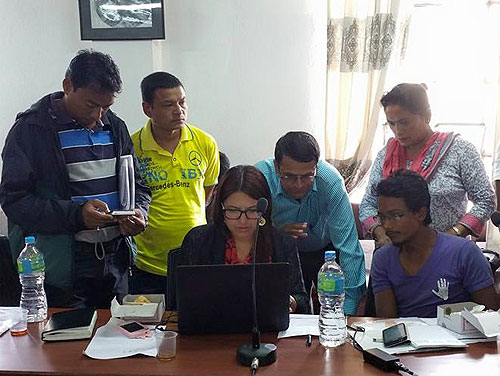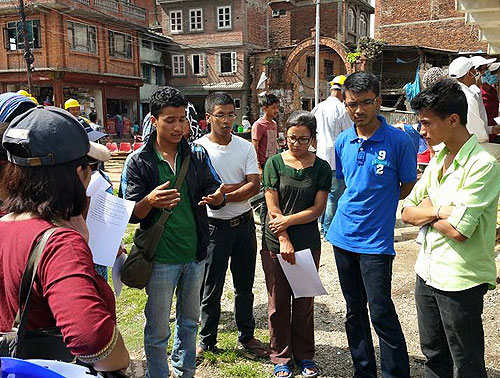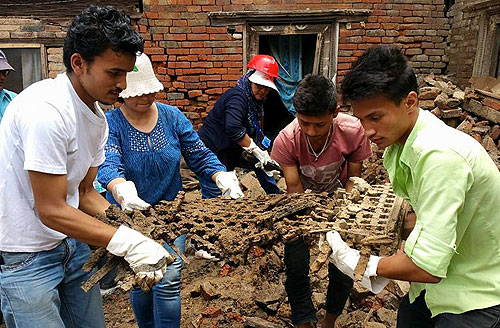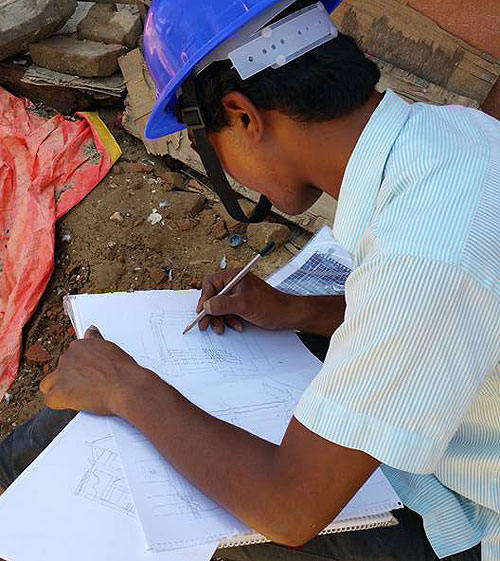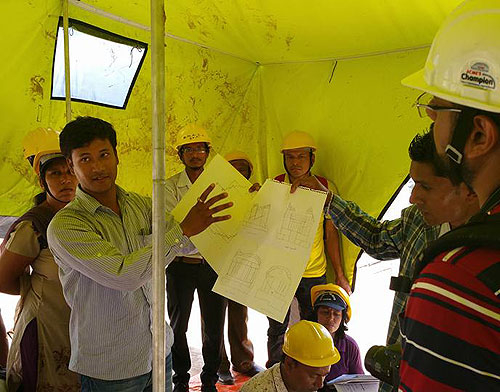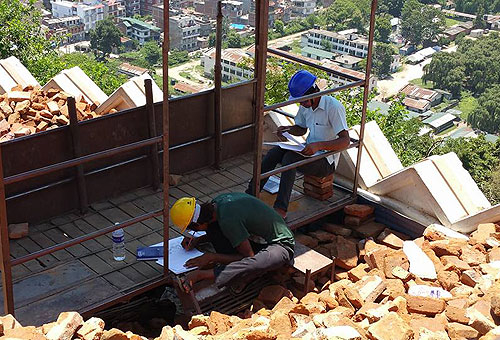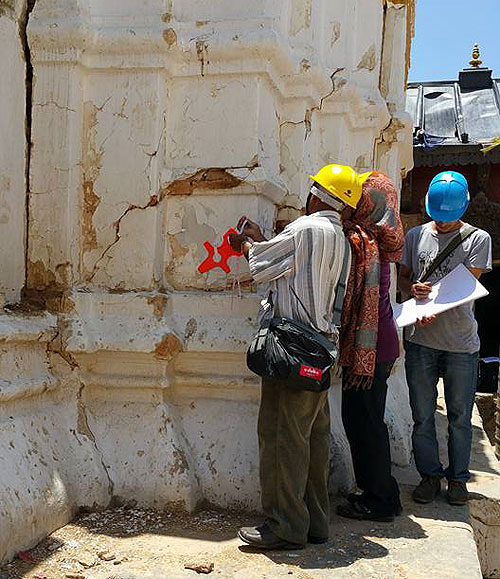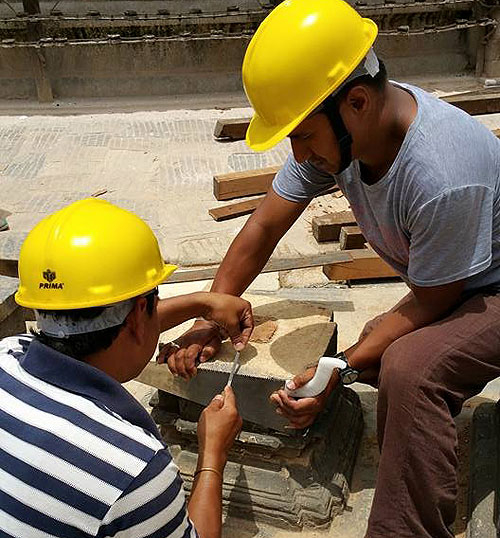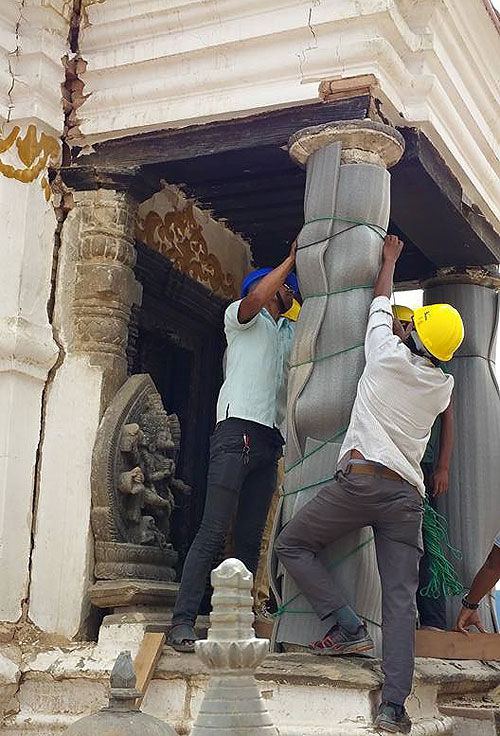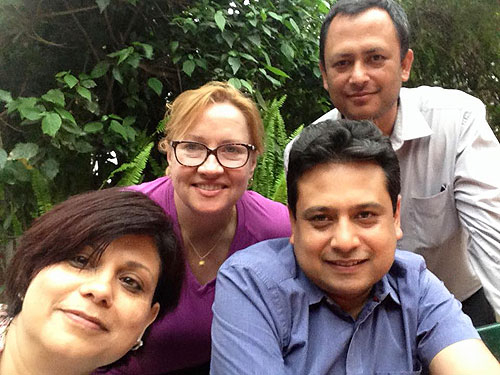From Recovery to Risk Reduction
In an effort to turn the tragedy and loss of the 25 April earthquake into an opportunity to promote the resilience of cultural heritage, ICCROM is currently in Kathmandu carrying out intensive training in partnership with ICOMOS, the Smithsonian Institution and ICOM. This is being done at the request of the the UNESCO Office in Kathmandu and the Department of Archaeology of the Government of Nepal and with the generous support of Prince Claus Fund (The Netherlands).
The objective is to develop a national team of cultural professionals capable of leading the stabilization and security of damaged heritage and continuing First Aid activities in the coming months. The multidisciplinary teaching team consists of structural engineers, a preservation architect, a conservator and a collections conservator.
Photos and captions courtesy of Rohit Jigyasu (ICOMOS-ICORP) and Aparna Tandon (ICCROM).
10 June, at the Chaavni National Museum:
Resource persons from ICCROM, ICOMOS, ICOM and the Smithsonian Institution conduct joint site training on emergency salvage and storage of heritage fragments and museum collections for the staff of the Department of Archaeology and other museums in the Kathmandu Valley.
11 June, training the military:
Fantastic session with Nepalese Army and Police on salvage and handling of collections and heritage fragments from earthquake damaged buildings. Good cooperation between cultural heritage and civic defence organizations is key to effective response.
12 June, handling and packing collections:
Nepalese participants responsible for various museums in Kathmandu learn about handling and packing of collections during an emergency evacuation.
13 June, on-site salvage operation:
A salvage operation was carried out at Hanuman Dhoka by the Department of Archaeology, and the Nepalese army and police. A truly rewarding experience.
14 June, next steps:
The team is now gearing up for field training for engineers from the Department of Archaeology, architects, craftsmen and contractors on the emergency stabilization of heritage structures, followed by a one-day workshop on salvage, documentation and storage of architectural heritage fragments for local community volunteers and the army. These will take place from 17 to 22 June in the historic settlement of Sankhu, which was ravaged by the earthquakes and left with nearly 90 percent of the structures heavily damaged or collapsed. The workshop is organized in cooperation with the Department of Archaeology, the Municipality of Sankhu and local community organizations.
17 June, Emergency Stabilization of Heritage Structures Workshop Day 1:
The workshop started today in Kathmandu, organized for engineers and craftsmen, with the collaboration of Department of Archaeology. After initial classroom sessions the participants went to Sankhu and did field exercises on visual damage assessment.
18 June, Emergency Stabilization of Heritage Structures Workshop Day 2:
On the second day of the workshop, participants visited Changu Narayan and undertook a detailed group field exercise on material identification, architectural and structural analysis, damage mapping of heritage, and filling in a rapid visual survey map. A similar exercise was also undertaken in the historic city of Bhaktapur.
19 June, Emergency Stabilization of Heritage Structures Workshop Day 3:
On the third day of ICCROM-ICOMOS-ICOM-Smithsonian workshop, participants learn about concepts, principles, techniques and calculations for emergency stabilization of heritage structures. This will be followed by practical training session during subsequent days at Pratappur temple at the Swayambhu World Heritage Monument Zone.
20 June, Emergency Stabilization of Heritage Structures Workshop Day 4:
ICCROM-ICOMOS-ICOM-Smithsonian team conducts exercises with young volunteers from Sankhu. The aim is to develop work flows for salvage and storage of architectural heritage fragments from traditional houses damaged due to the earthquake.
21 June, Emergency Stabilization of Heritage Structures Workshop Day 5:
On the fifth day, participants carry out damage assessment and develop emergency stabiliaation solutions for the Anantapur and Shantipur temples at at the Swayambhu World Heritage Monument Zone in the Kathmandu Valley.
22 June, final day:
On the last day of the ICCROM-ICOMOS-ICOM-Smithsonian workshop, participants carried out practical stabilization exercises at the Anantapur temple. It was interesting to observe the sharing of local knowledge (of the carpenters) with that of the engineers – the results of which were quite innovative. During the concluding session certificates were presented to the participants. With this, the curtains are drawn on our initiative for First Aid to Nepalese cultural heritage. It was pioneering, but an extremely challenging and very satisfying experience interacting with young, talented and enthusiastic participants in combining theory with practical needs on the ground. Glad we could do our little bit by building capacity for effective emergency response to the rich cultural heritage of Nepal. We hope the trained participants will continue to train others and build a multidisciplinary ‘Heritage Emergency Rescue Team’, well prepared to respond to future disasters.
The First Aid Team:
Clockwise from top: Komal Aryal, Disaster Risk Management Specialist affiliated with Nepalese Red Cross; Rohit Jigyasu, President of the ICOMOS International Scientific Committee on Risk Preparedness (ICORP); Aparna Tandon, Project Specialist in charge of the cultural disaster risk programme at ICCROM; and Corine Wegener, Cultural Heritage Preservation Officer at the Smithsonian Institution.

